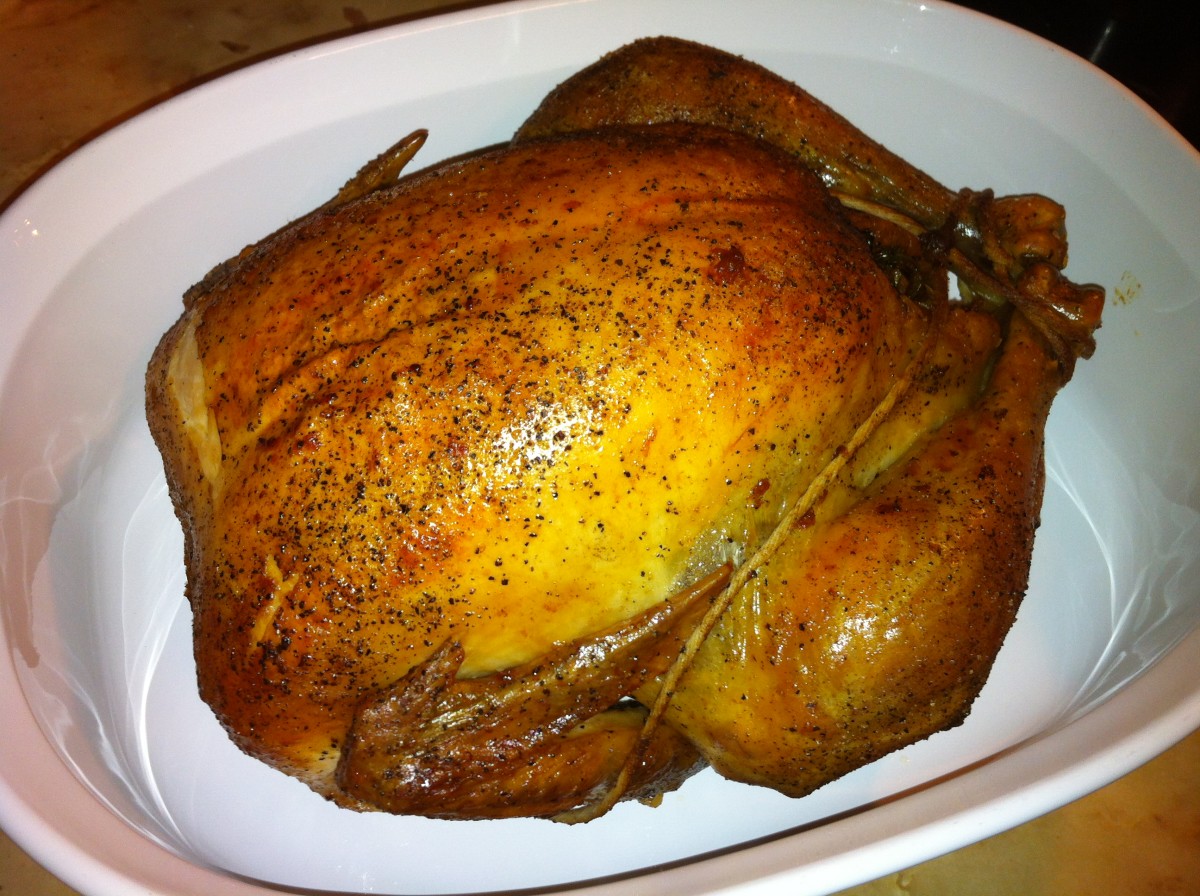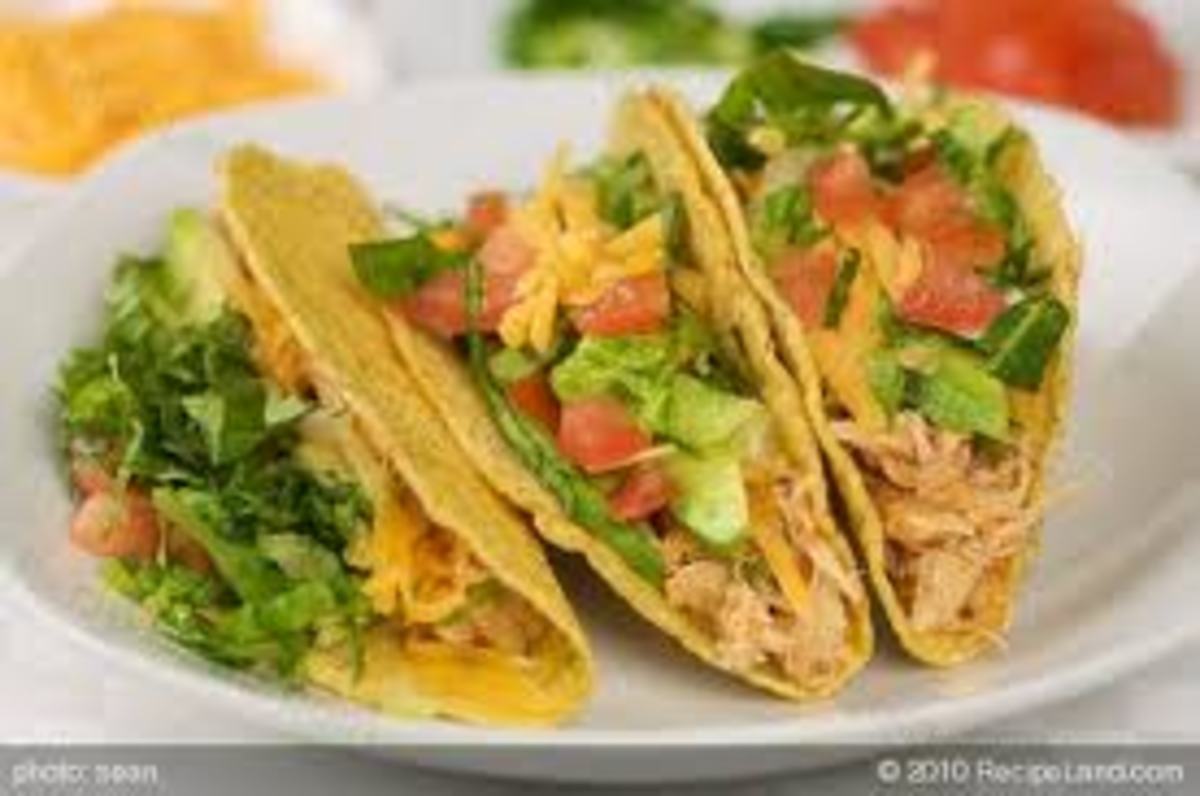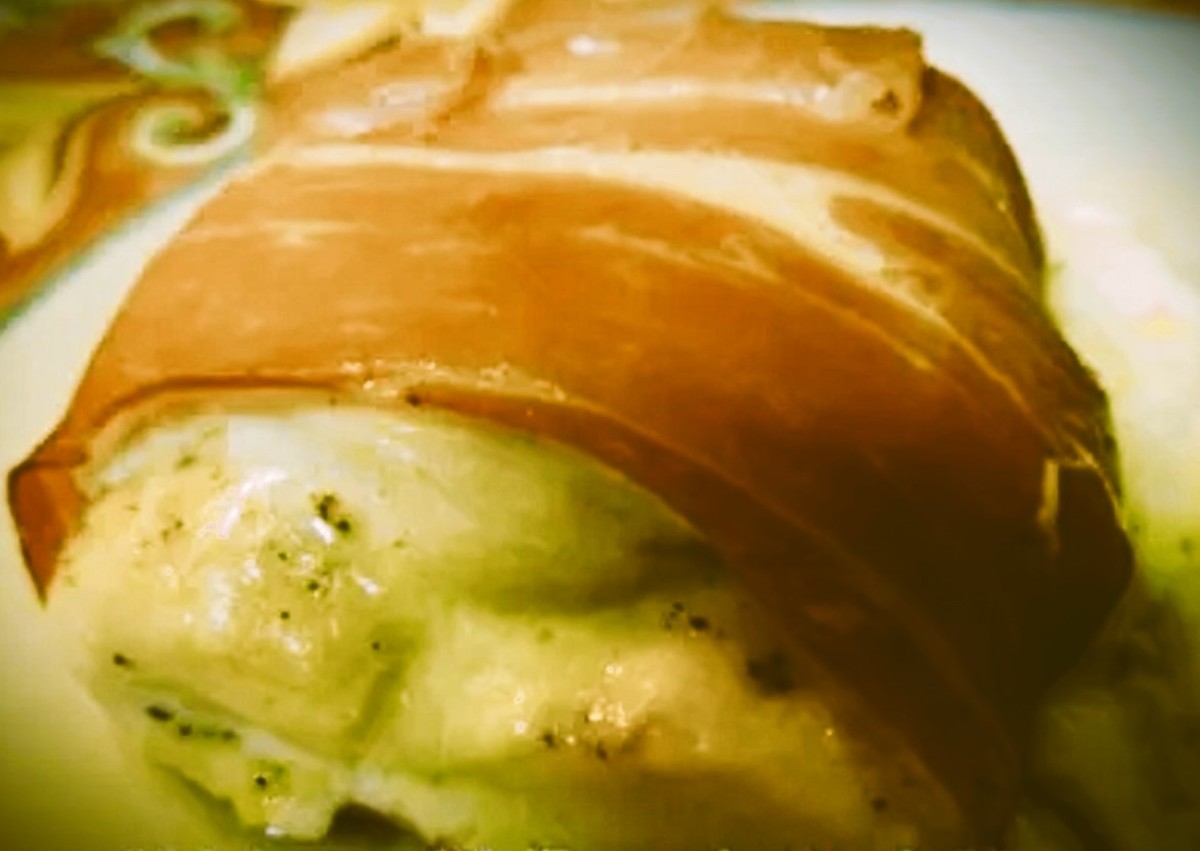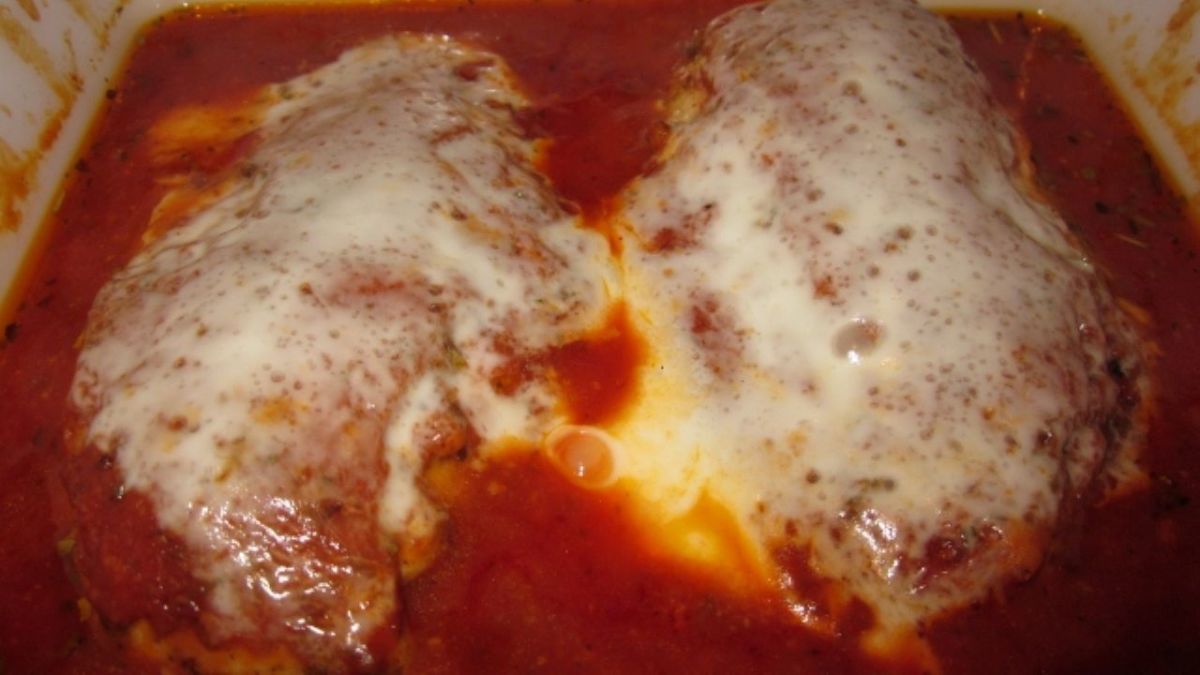- HubPages»
- Food and Cooking»
- Main Dish & Side Dish Recipes»
- Chicken Recipes
Quick and Easy Baked Chicken Recipe with No Waste
A Free Chicken Makes a Happy Meal
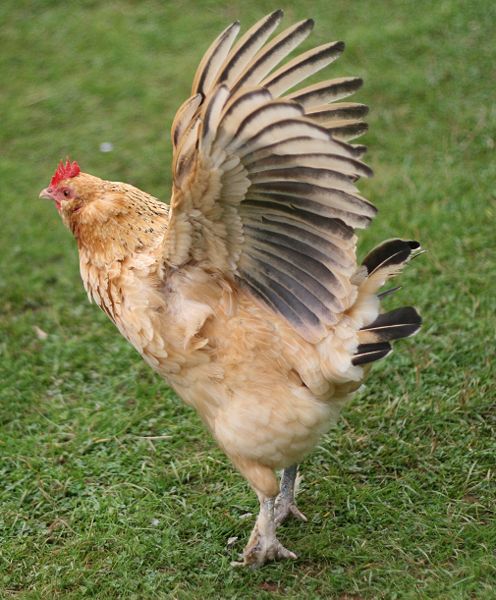
Our family is both chicken-loving and thrifty. We delight in the aroma of a chicken baking in the oven, in the savory taste given up by such a simple food, and in the thanks we receive from friends and family when this delectable dish is served at the dinner table. We also delight in making sure no part of this chicken that was destined for our table is wasted. You will enjoy this quick and easy baked chicken recipe, and we hope you will also enjoy experimenting with the not-so-obvious treasures a chicken gifts us.
Trip Down Memory Lane
In the 1970s and 80s, we bought our chickens from a local farmer who came by on Thursday afternoons in his 1936 Ford truck. Bolted into the floor of the back of the truck was an ancient, hand-crafted, open cooler which was made of plank boards.At the bottom of the cooler was a block of ice. The freshly killed and bagged chickens were laid out on top of the ice and then covered with wet burlap bags.
Our farmer left the truck’s back doors open as he made his rounds. Air passing over the wet burlap bags kept the chickens fresh and cold from the farm to the kitchen.
The chickens grew up on the farm just like the farmer’s kids did—free-ranging and hormone-free. These chickens were so fresh, I swear I heard them cluck a few times as the farmer lifted them out of the cooler and carried them to our house.
Throughout the spring we’d buy several chickens a week and put the extras into our basement freezer, so that we’d have “spring” chickens all year ‘round. We’d bake them, barbeque them, stew them, fry them, and make soup and salad out of them in endless varieties.
Our Favorite Baked Chicken Recipe
My family’s favorite variety of baked chicken then is still our favorite now. Not only is it ridiculously easy to make, it is fantastically fragrant and, for us, always brings back warm memories of the farmer, his family, and his friendship.
Ingredients
1 Whole 5 to 6-pound chicken and its parts (neck, heart,
gizzard, liver)
1 Teaspoon garlic powder (not garlic salt)
1 Tablespoon dried basil
1 Teaspoon dried oregano
2 Teaspoons dried thyme
1 Tablespoon dried marjoram
1 Teaspoon dried tarragon
1 Teaspoon freshly ground black pepper
1/3 Cup Lea & Perrin’s White Wine Chicken Marinade
Chicken Quarter
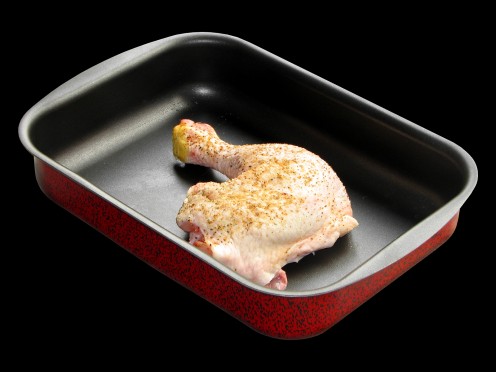
Method
- Turn the oven to 350 degrees F.
- Cut the chicken up so that you have two wings, two
“quarters” (the leg and thigh together along with half the back piece is a
quarter), and two breast pieces. If you are among those who don't care for this kind of hands on work, and many don't, ask your butcher to cut the chicken for you.
- Use a shallow baking pan (like a sheet cake pan). If you want to make clean-up a little easier, spray the pan with a non-stick spray or line the pan with aluminum foil.
- Arrange the chicken pieces in the pan, making sure the quarters and breasts are skin-side up. Tuck the neck, gizzard, liver, and heart here and there between the pieces.
- Sprinkle the herbs and pepper over the chicken pieces, distributing them evenly.
- Drizzle the white wine marinade evenly over all the pieces.
- Place the pan, uncovered, in the pre-heated oven and bake for 30 minutes.
- Remove the pan from the oven and turn the pieces over using tongs so you don’t pierce the skin or dislodge it from the flesh.
- Return the pan to the oven for another 30 minutes.
- Remove the pan again, turn the pieces, put the pan back into the oven, and finish baking for about 15 to 20 minutes.
- When the chicken is done, it will have a beautiful, glistening, and crusty skin. And your kitchen will smell heavenly!
- Remove the pan from the oven and use the tongs to move the chicken pieces from the pan to a serving platter.
Traditional Chicken Noodle Soup

Waste Not, Want Not
Beyond making sandwiches, salads, or soups from whatever chicken meat is left over, you can make wonderful secondary foods from every single part of the chicken. Nothing need go to waste.
The Chicken Fat Pour the oven pan drippings into a bowl, cover, and refrigerate. After a few hours, the chicken fat will congeal at the surface. Remove the fat, put it in a covered container, and refrigerate or freeze. You can use the fat as a replacement for butter or oil when sautéing potatoes, making potato pancakes, pan-frying boneless, skinless chicken meat, and even when mixing a batch of homemade bread dough. The fat adds flavor, and in the case of the bread, it creates a finer texture than butter.
The Chicken Stock Beneath the fat is a rich, jelled stock which will keep well in the refrigerator for a week or in the freezer for a few months. Use this stock as a base for gravy or soup. I often collect batches of this frozen stock in order to make a huge pot of chicken soup.
The Chicken Bones Put the bones that haven’t been gnawed by family and guests in a soup pot, add water to cover, and simmer for about five hours on the stove top. Add boiling water when needed to keep the bones covered. After this long, slow cooking, let the contents of the pot cool a bit, strain through a colander. You will be surprised at how few of the small bones are left. Chill the resulting liquid in the refrigerator and skim off whatever fat congeals. Use this final chicken stock as a snazzy sauce to pour over your dog’s dry kibble for an occasional treat.
At the end of this effort, you should have a very small pile of bones and skin to throw away.
As you say good-bye to that small pile, make sure you also say thanks to the chicken that brought your kitchen so much warmth, nutrition, and cheer.
More Quick and Easy Dishes from Sally's Kitchen
Recipes appearing in Sally’s Trove articles are original, having been created and tested in our family kitchens, unless otherwise noted.

